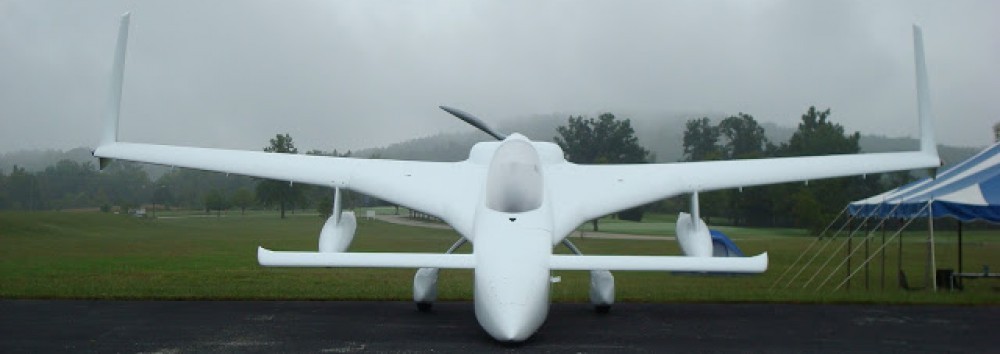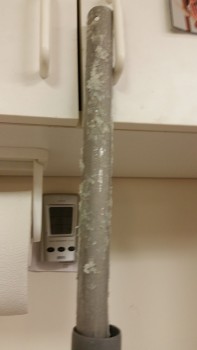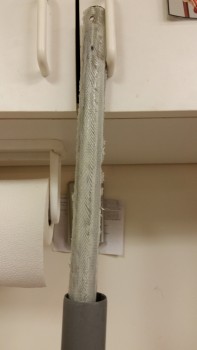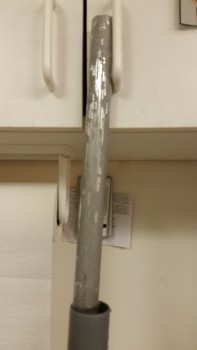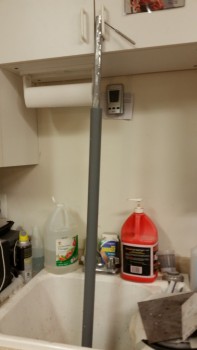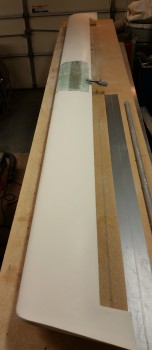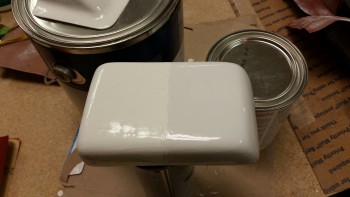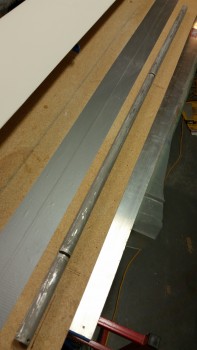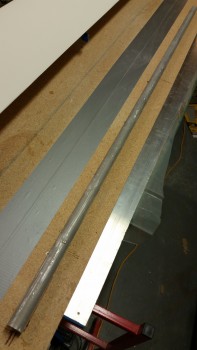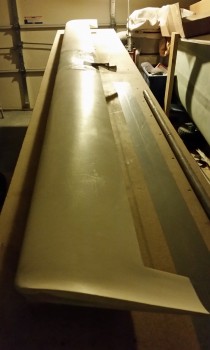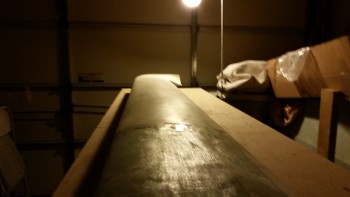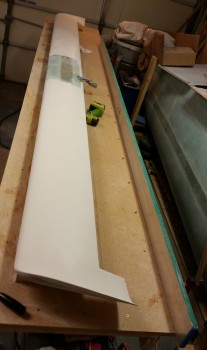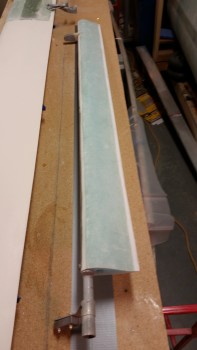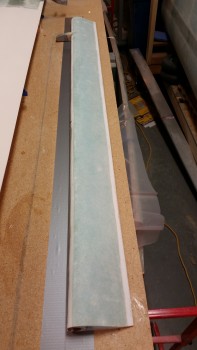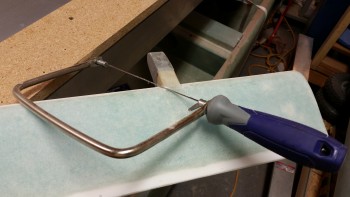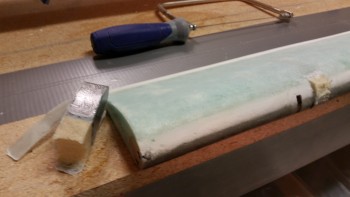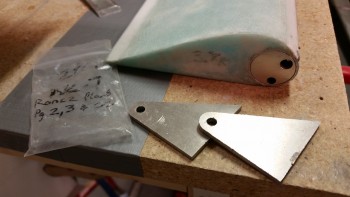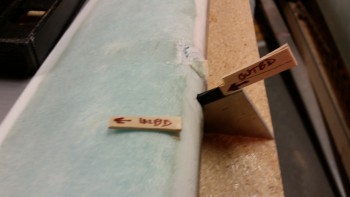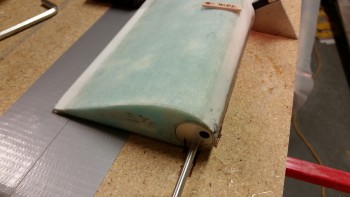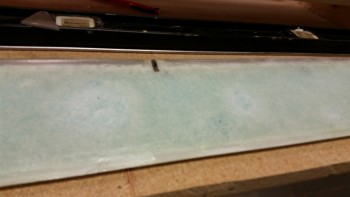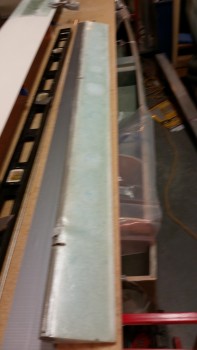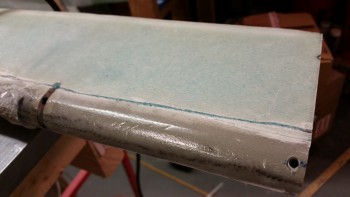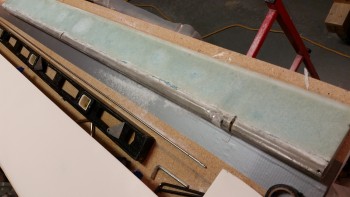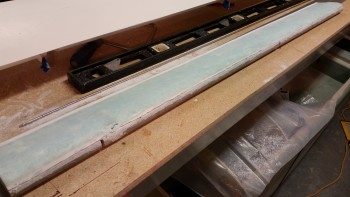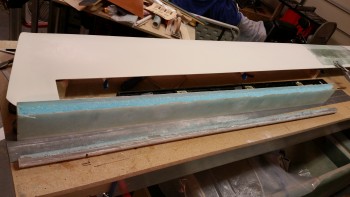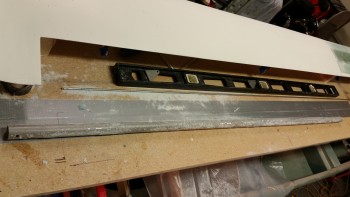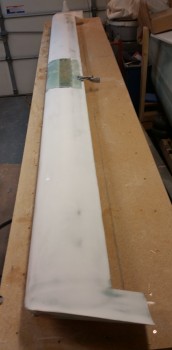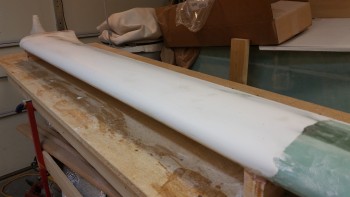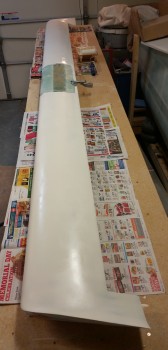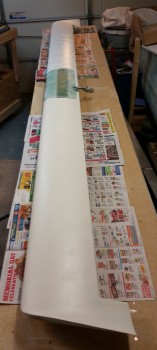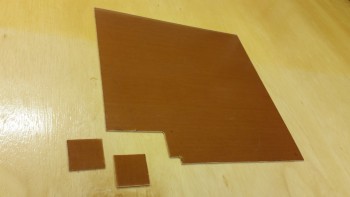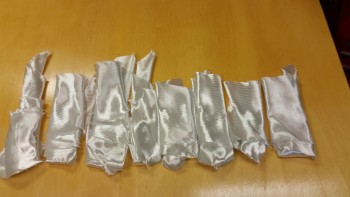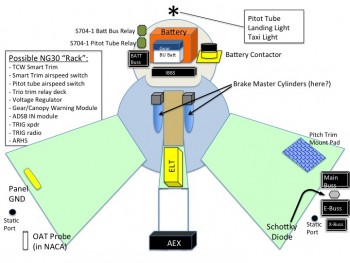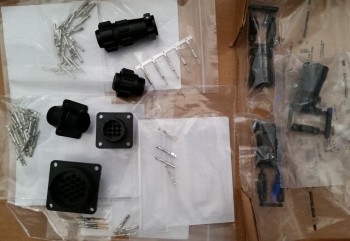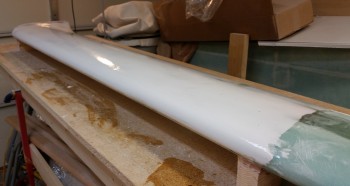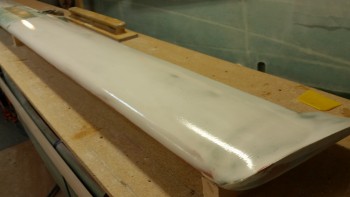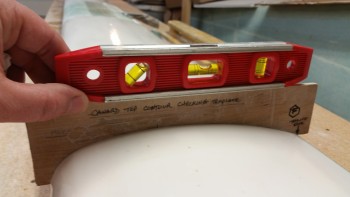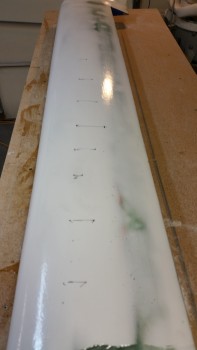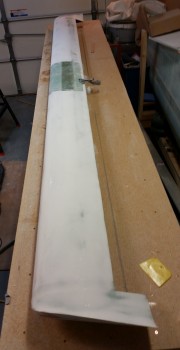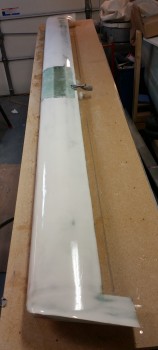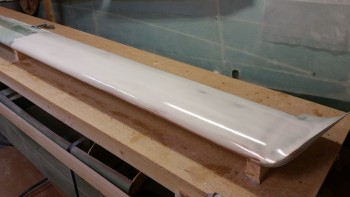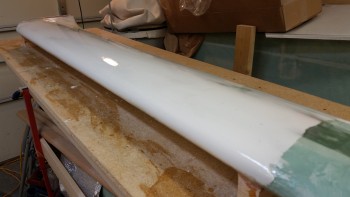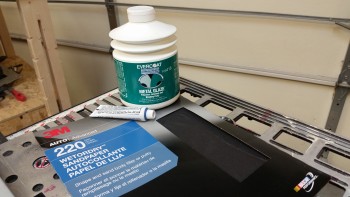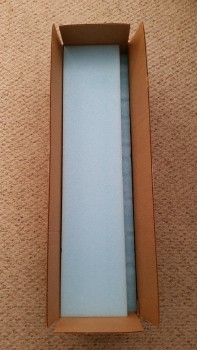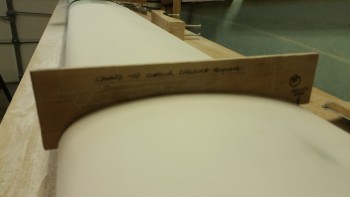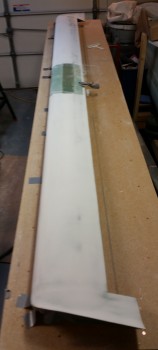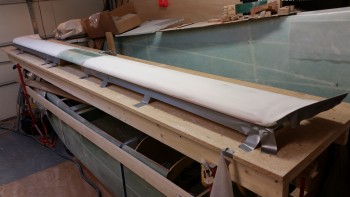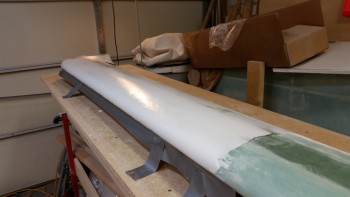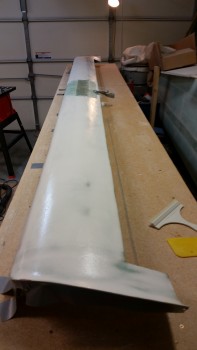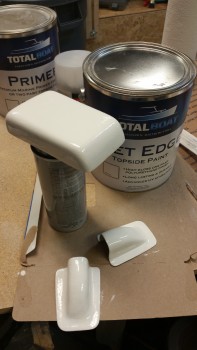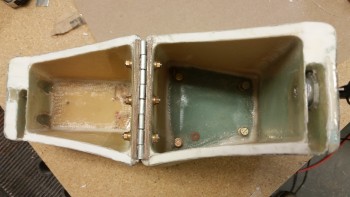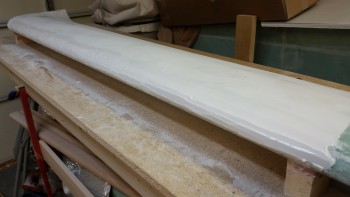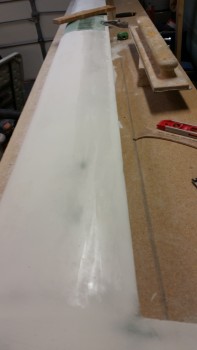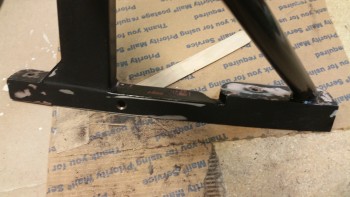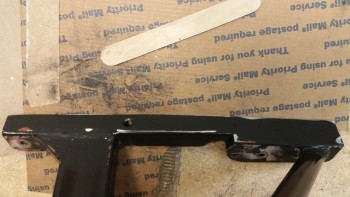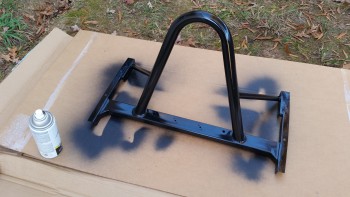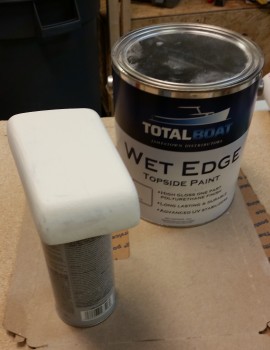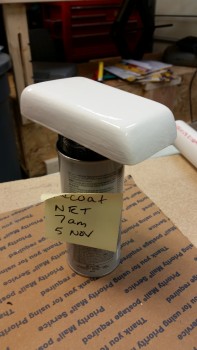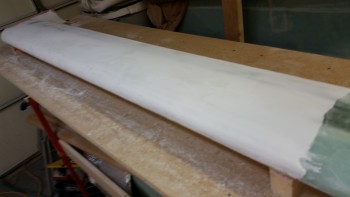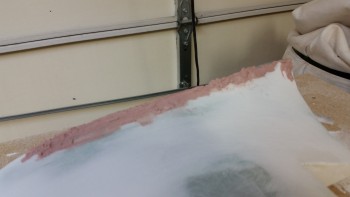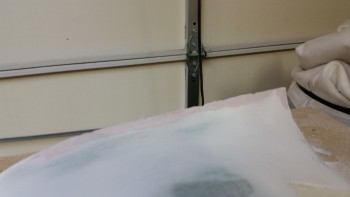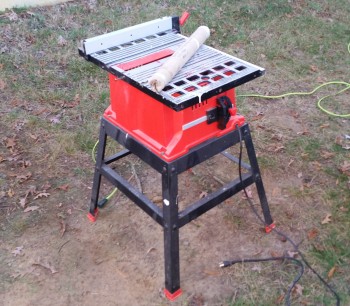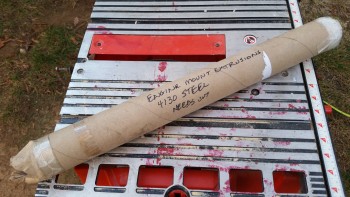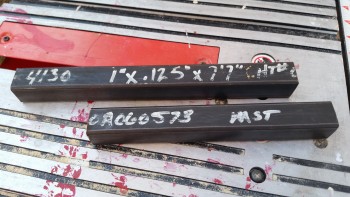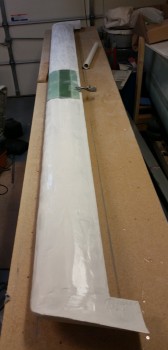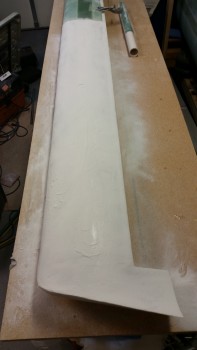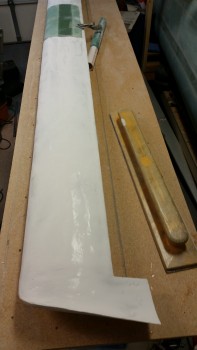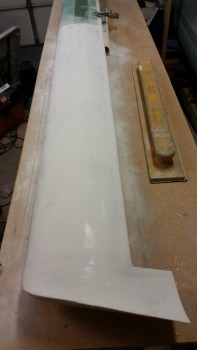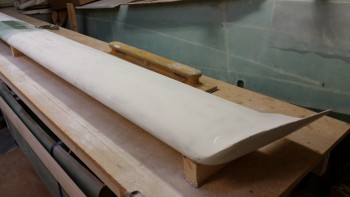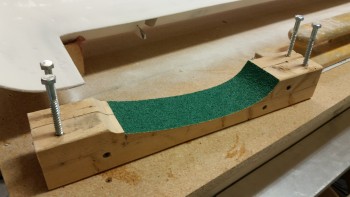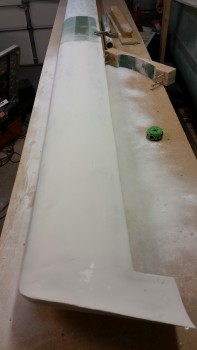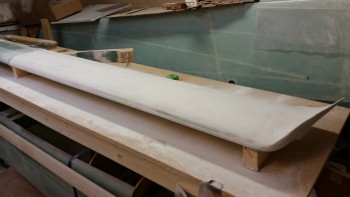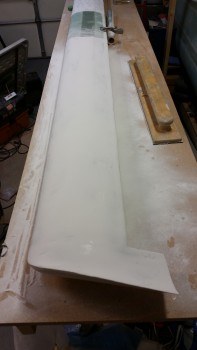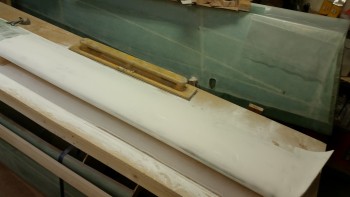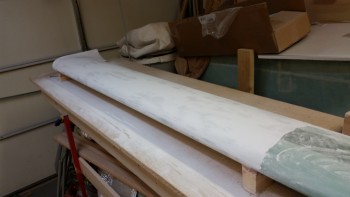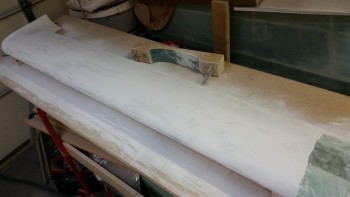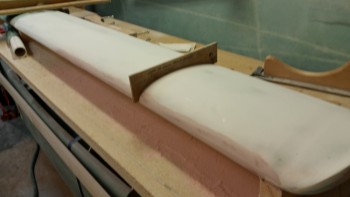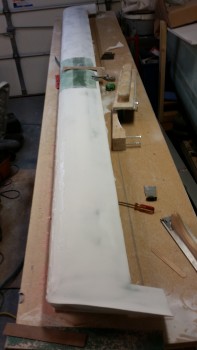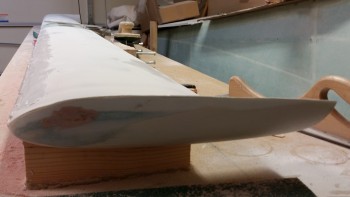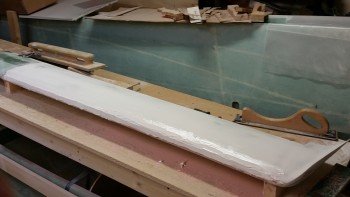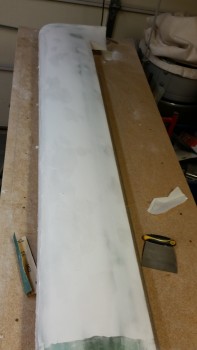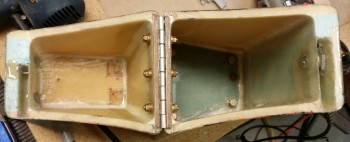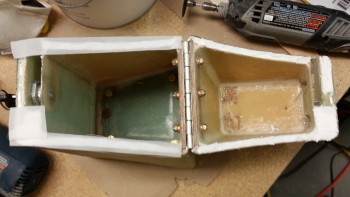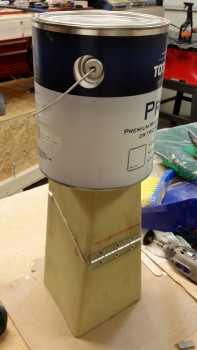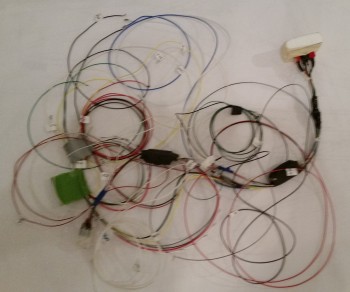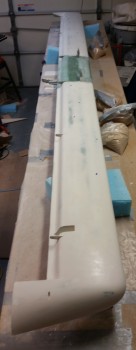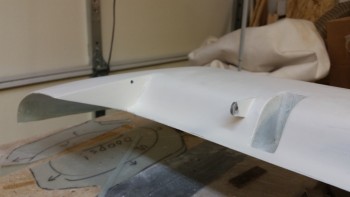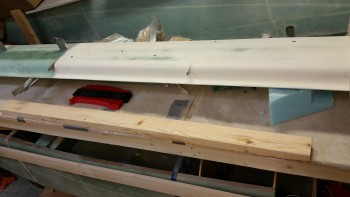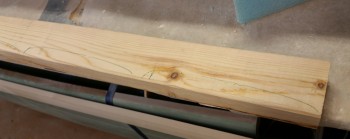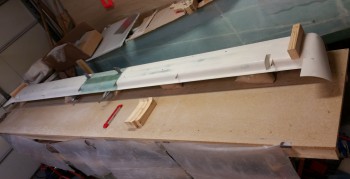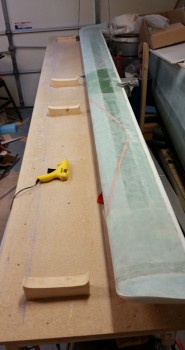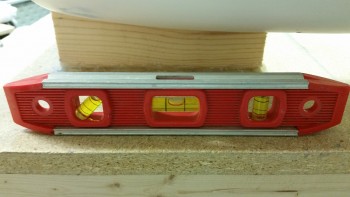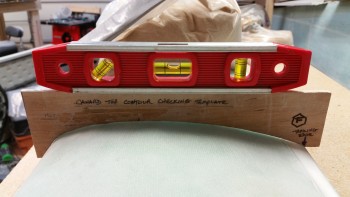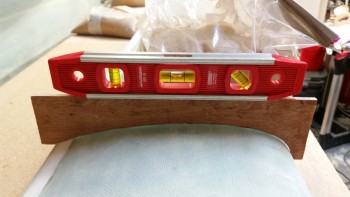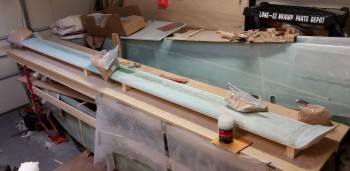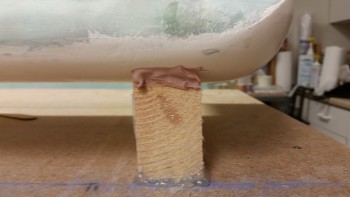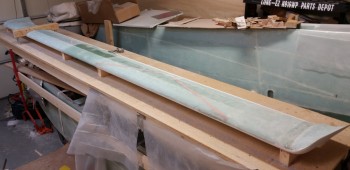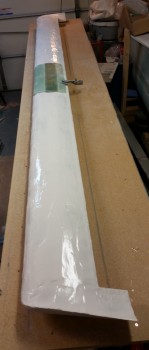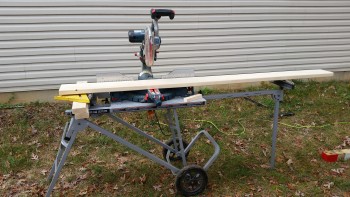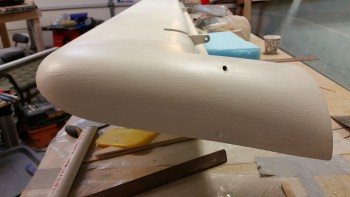After a meeting I had in the office earlier today I ran over to Maryland to pick up a different brand of boat paint. I’m going to do some tests and will report back on the entire plan later on.
Upon returning home I took the elevator tube out of the PVC tube filled with white vinegar and flipped it over to get the untouched 25% into the vinegar. I cleaned off the majority of gunk with paper towels, then grabbed my razor knife and started cleaning off the dead glass. I got as far down as the second hinge hardpoint (NC2).
After getting as much of the soaked dead glass off the tube as possible, I set the elevator tube back into the PVC tube filled with vinegar to soak.
After I put the elevator tube back in the vinegar cleaning solution, I then sanded the canard surface starting with 80 grit on the long board, and then switched to 120 grit on the long board as well. I then switched to 150 grit paper and hand sanded each swoosh tip.
I was still getting a fair amount of residue on the sandpaper and had to clean it off the paper at regular intervals. After going through another few sheets of very expensive long board sandpaper (although tonight was much better than last night as far as residue buildup), I decided to wait until tomorrow to finish sanding the top of the canard after it’s cured just a bit more.
In addition, I’m going to hit the canard with another couple coats of primer of the new boat paint. I can tell already that this new primer is much more high build than my current primer, and of course you always need a good base of primer preferably of the same brand. In light of this, I really want to get this primer sanded down to where the canard shape is as close to final as possible, and then smoothed out even more once the new primer is applied.
I then broke out the new paint to try it out. As I said before as I was looking at the actual color of the white boat paint I had ordered before, in contrast with the white label on the gallon can and a standard white piece of paper, it clearly looked off white. To compare and contrast the new paint I sanded down half of the headrest GPS antenna cover with 220 grit paper, and then painted it with the new paint. I have to say that A) the new boat paint went on much easier and laid down much better than the old boat paint, and B) the new paint seems to have more of a “blue” hue vs a “yellow” hue, as you can see below. The bottom line is that the new paint is simply whiter, in my opinion.
Here’s a couple shots of the elevator tube in its current state. I would say it’s about 90% clean, and after I shot these pics I put it back in the PVC tube to soak in the vinegar over night.
Finally, here are a couple of shots of the canard with nothing but a single light reflecting on its surface. This provides a good view of the imperfections currently on the top surface of the canard. As you can see, there are few minor imperfections –mainly simple & minor surface depressions– on each side of the canard top.
Tomorrow I plan on doing a final clean of the elevator tube, sanding down the surface, and then Alodining it in prep of micro’ing the elevator core to it. I will also do a final sanding of the current primer on the canard top in prep of laying down a couple coats of the new primer. I’ll then let the new primer cure 24-48 hours before giving it a final sanding.
